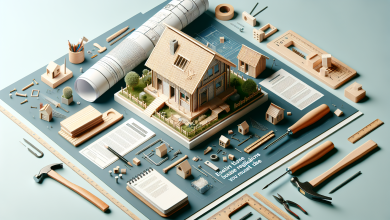Tiny House Living: Essential Budgeting Tips for Beginners
Tiny House Living: Budgeting Tips for Beginners
Tiny house living offers a unique lifestyle choice that can save you money and simplify your life. In this article, we will explore what tiny house living entails and provide budgeting tips for beginners. You will learn how to assess your financial situation, set a realistic budget, and discover cost-saving strategies that will help you thrive in your small space.
Introduction to Tiny House Living
Tiny house living refers to the practice of residing in small homes, typically under 400 square feet. This lifestyle is gaining popularity as more individuals seek ways to reduce their environmental footprint, financial burdens, and the clutter in their lives. By embracing minimalism and simplifying their living environment, many find enhanced freedom and flexibility.
There are numerous benefits associated with tiny house living. First and foremost, it can lead to significant savings on housing costs. Additionally, tiny homes often require less maintenance, meaning less time spent on chores and more time enjoying life. Moreover, the smaller space encourages thoughtful consumption and sustainable living practices.
In summary, tiny house living provides a path to a more minimalist, financially secure, and environmentally-friendly lifestyle.
Budgeting for Tiny House Living
When embarking on the journey of tiny house living, it is crucial to understand the budgeting aspects involved. This begins with the initial costs associated with either building or purchasing a tiny house. Factors such as location, materials, and design complexity will impact the total cost. While a basic tiny home can start around $10,000 to $30,000, custom builds can exceed $100,000. Financing Options for Tiny House Owners Explained hakkında daha fazla bilgi edinin.
Ongoing expenses must also be considered. Monthly costs like utilities, property taxes, and homeowners insurance can vary significantly based on your location and lifestyle choices. Additionally, factor in maintenance costs for repairs and upgrades over time. Understanding these expenses will help you create a more accurate budget.
By considering both initial and ongoing costs, you can gain a clearer picture of your financial commitment to tiny house living.
Creating a Tiny House Budget
To effectively manage your finances while living in a tiny house, start by assessing your current financial situation. Take a close look at your income, expenses, savings, and debts. This assessment will help you determine how much you can allocate towards your tiny house budget.
Next, set a realistic budget that reflects both your financial capabilities and lifestyle goals. A comprehensive budget should include all areas of spending, from housing costs to daily living expenses. Allocate funds for savings and emergencies to ensure financial stability. Tiny House Communities: Embracing Minimalist Living hakkında daha fazla bilgi edinin.
Having a clear budget will help you navigate the costs associated with tiny house living and ensure you stay within your means.
Cost-Saving Tips for Tiny House Living
One of the key aspects of tiny house living is finding ways to save money. DIY projects and upcycling are excellent ways to furnish and decorate your home without breaking the bank. Consider repurposing old furniture or building your own shelves and storage solutions to maximize space and minimize costs.
Smart shopping strategies can also lead to significant savings. Look for second-hand items at thrift stores, garage sales, and online marketplaces. Additionally, buy in bulk where possible and take advantage of seasonal sales for essential items.
By implementing these cost-saving strategies, you can create a beautiful and functional tiny home while keeping your expenses low. Design Your Dream Tiny Home: A Complete Guide hakkında daha fazla bilgi edinin.
Managing Living Expenses in a Tiny House
When it comes to tiny house living, managing living expenses is crucial for long-term financial health. Utilities and maintenance costs can add up quickly if not monitored. To keep these expenses in check, consider energy-efficient appliances and sustainable practices such as solar power or rainwater harvesting.
Additionally, living below your means is a core principle of tiny house living. This mindset encourages conscious spending and prioritizing needs over wants. By focusing on essentials and avoiding unnecessary expenditures, you will find it easier to maintain financial stability.
With proper management of living expenses, tiny house living can be a sustainable and enjoyable lifestyle choice.
Conclusion: Embracing a Budget-Friendly Tiny House Lifestyle
In conclusion, tiny house living offers a unique opportunity to embrace a simpler, more financially stable lifestyle. By understanding the initial and ongoing costs, creating a realistic budget, and implementing cost-saving strategies, you will be well-equipped to thrive in your tiny home. Start your journey today by assessing your finances and exploring the tiny house community. For further learning, consider joining online forums or seeking out tiny house workshops.




